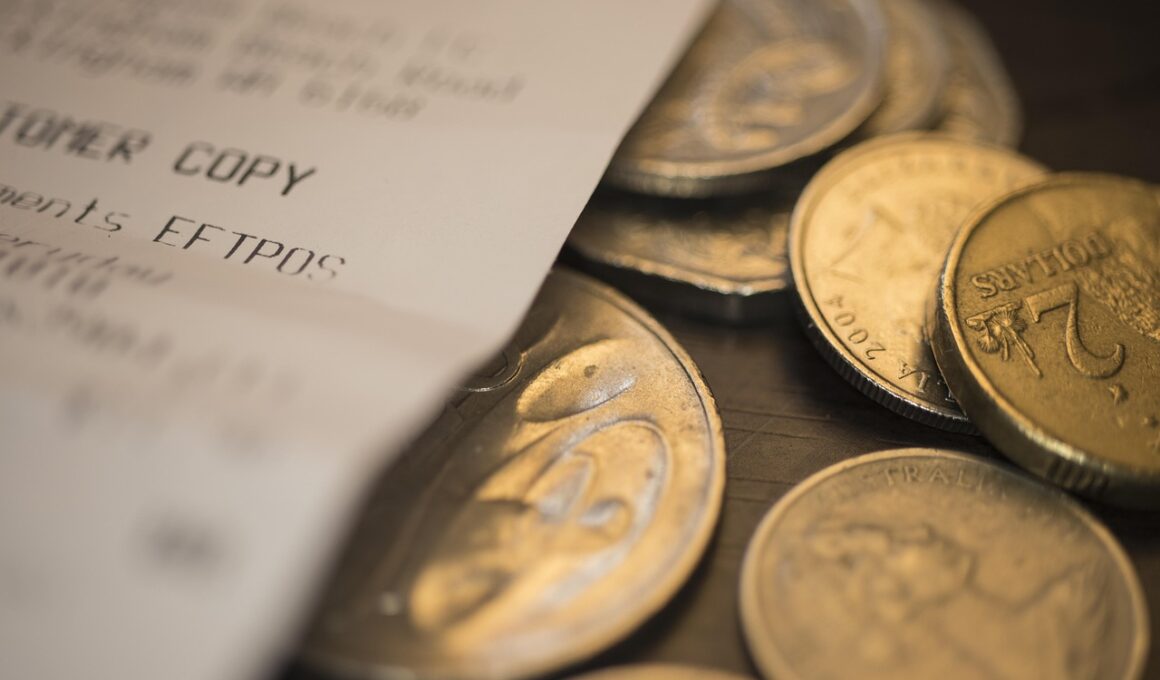How to Start a Minimalist Budget: A Step-by-Step Guide
Budgeting is a crucial aspect of personal finance that can transform your financial health. Minimalist budgeting focuses on prioritizing essential expenses while eliminating unnecessary expenditures. The first step towards implementing a minimalist budget is to assess your current financial situation. Gather all financial documents, including bank statements, credit card bills, and loan information. Once you have a clear understanding of your income and expenses, categorize them into fixed and variable expenses. Fixed expenses are those that remain constant each month, such as rent or mortgage, while variable expenses can fluctuate, like groceries or entertainment. This categorization will identify areas where you can cut back. It’s essential to be honest with yourself about your spending habits. Evaluate which expenses are truly necessary and which ones can be reduced or removed. For example, consider cancelling subscriptions you rarely use or dining out less frequently. Understanding your priorities will guide your budget accordingly. Remember, minimalism is not about deprivation but curating a fulfilling financial life focused on needs rather than wants, leading to a more prosperous future.
Once you’ve categorized your expenses, it’s time to set realistic financial goals. Begin by determining your short-term and long-term financial objectives. Short-term goals might include saving for a vacation or reducing credit card debt, whereas long-term goals could involve saving for retirement or buying a home. Define clear and attainable goals, ensuring they align with your income. Consider the time frame for each goal and check if they fit your financial capability. Now, it’s important to develop a plan for achieving these goals. Create a savings plan that directs a percentage of your income towards your financial objectives each month. Factor in your variable expenses to ensure you don’t overspend. Tracking your progress is vital so that you can adjust your approach if needed. Utilize budgeting apps or simple spreadsheets to keep a close eye on your finances. Regularly review your budget and make necessary adjustments based on changes in your financial situation or goals. Staying committed to your financial journey is essential. Embrace the process as a continuous improvement effort rather than a one-time task to reap its long-term benefits.
Implementing Your Minimalist Budget
With your goals set, the next step is to implement your minimalist budget. Start by developing a clear monthly budget based on your current income and expenses. Write down each category with the amount allocated for the month. This written plan will act as a roadmap for your spending habits. Consider using the 50/30/20 rule as a guideline: devote 50% of your income to needs, 30% to wants, and 20% to savings or debt repayment. This rule simplifies categorizing your spending and helps maintain balance. It’s essential to stick to the budget you’ve created. At the beginning of each month, allocate your income based on the planned budget and avoid unnecessary purchases. Regularly assess your expenses against the budget throughout the month. This can help you stay accountable and avoid impulsive spending. If you find yourself overspending in a category, identify where you can adjust in another area. Be flexible yet disciplined in your approach, and remember that budget adjustments may be necessary as your financial situation evolves over time.
Tracking your spending is a crucial part of adhering to your minimalist budget. Consider journaling your daily expenses to maintain awareness of your financial habits. This practice helps you identify areas that require improvement. Set aside time each week to review your spending journal. Evaluate which expenses align with your budget and which ones can be further minimized. If you notice consistent overages in certain categories, it’s an opportunity to reconsider your priorities. A minimalist budget requires honesty and willingness to adjust behaviors that may lead to excessive spending. Incorporating technology can greatly assist in this process. Utilize budgeting tools and apps designed to track expenses automatically. Several applications allow syncing with your bank accounts for real-time tracking. Look for options that categorize expenses, generate reports, and provide insights into spending patterns. By harnessing such technology, you can gain better control over your finances and adjust your budget effectively. Ultimately, the goal is to promote mindful spending aligned with your minimalist lifestyle while continuously finding value in every purchase you make.
Staying Motivated on Your Minimalism Journey
Staying motivated on your minimalist budgeting journey can often be a challenge. Launching into a new financial lifestyle can feel overwhelming, but remember that motivation is about focusing on the bigger picture. Start by celebrating small victories along the way. Tracking your progress with a visual representation, like a savings goal chart, can boost your enthusiasm. Watching your savings grow or debts decrease can be incredibly empowering. Engage with a community of like-minded individuals who are on similar financial journeys. Finding support through online forums or local meetups for minimalist living can help inspire you, offering ideas and encouragement. Sharing your experiences and hearing from others can keep you accountable and motivated. Additionally, don’t overlook the importance of pausing to re-evaluate your goals. Review your budget and make adjustments as needed. As your financial situation evolves, so will your goals. Reassessing your objectives ensures that they are always relevant and motivating. Finally, treat yourself occasionally but mindfully. Indulging in a small treat after reaching a milestone can reinvigorate your commitment to your minimalist journey.
As you become more adept at budgeting, contemplate the value of an “emergency fund.” An emergency fund acts as a financial safety net for unexpected expenses, providing peace of mind in turbulent times. Aim to save at least three to six months’ worth of living expenses in this fund. Prioritize building this fund within your minimalist budget by allocating a percentage of your income each month. Creating this financial buffer will prevent you from derailing your budget due to unforeseen costs. It’s essential to treat contributions to this fund as a non-negotiable expense, just like paying rent or utilities. In moments of financial uncertainty, having a robust emergency fund can alleviate stress and maintain your minimalist goals. Start small, even if it’s just a few dollars each month; consistency matters more than the amount saved. To grow your emergency fund faster, consider additional income sources or temporary side gigs. Monitor your emergency fund and ensure it remains accessible yet separate from routine spending accounts. This distinction will discourage impulsive withdrawals and help maintain your minimalist budgeting commitment over time.
Evaluating and Adjusting Your Budget Regularly
Regular evaluations of your budget are essential to ensure its effectiveness. At least every three to six months, take a detailed look at your income, expenses, and financial goals. This review will allow you to identify trends in your spending habits and areas needing adjustment. Assess whether your budgeting approach successfully aligns with your lifestyle and priorities. If you find recurring categories where you typically overspend, it may indicate a need for adjustments in how you allocate your budget. One effective strategy is to conduct a mid-year or end-of-year review to evaluate your long-term goals and see if your budgeting serves them effectively. Being open to change is critical; life situations can evolve, thus impacting income or expenses. Keep in mind that your minimalist budget should be malleable and capable of adjusting to financial changes. This flexibility can prevent feelings of frustration or defeat if unforeseen expenses arise. Stay proactive in managing your budget; over time, regular evaluations will heighten your financial awareness and enhance your budgeting skills, reinforcing your commitment to a minimalist lifestyle.
In conclusion, starting a minimalist budget requires a dedication to reshaping your financial outlook. By assessing expenses, setting clear goals, and tracking spending habits, you will significantly enhance your financial well-being. Implementing, evaluating, and adjusting your budget creates a sustainable financial plan geared towards long-term success. Remember that the journey may have challenges, but staying committed to your actions will yield rewarding results. Seek community support and utilize various tools to keep you motivated and accountable. The minimalist budgeting approach not only diminishes financial stress but creates a life centered on meaningful spending. With perseverance and adaptability, you can cultivate a lifestyle that prioritizes needs for genuine fulfillment. Start one step at a time, and gradually, you will witness the transformative power of minimalism in your finances. Your experience with minimalist budgeting will teach valuable lessons about prioritizing what truly matters, freeing you from the burden of financial clutter. Embrace the process, and allow yourself to enjoy the simplicity and clarity a minimalist budget can bring into your life.


